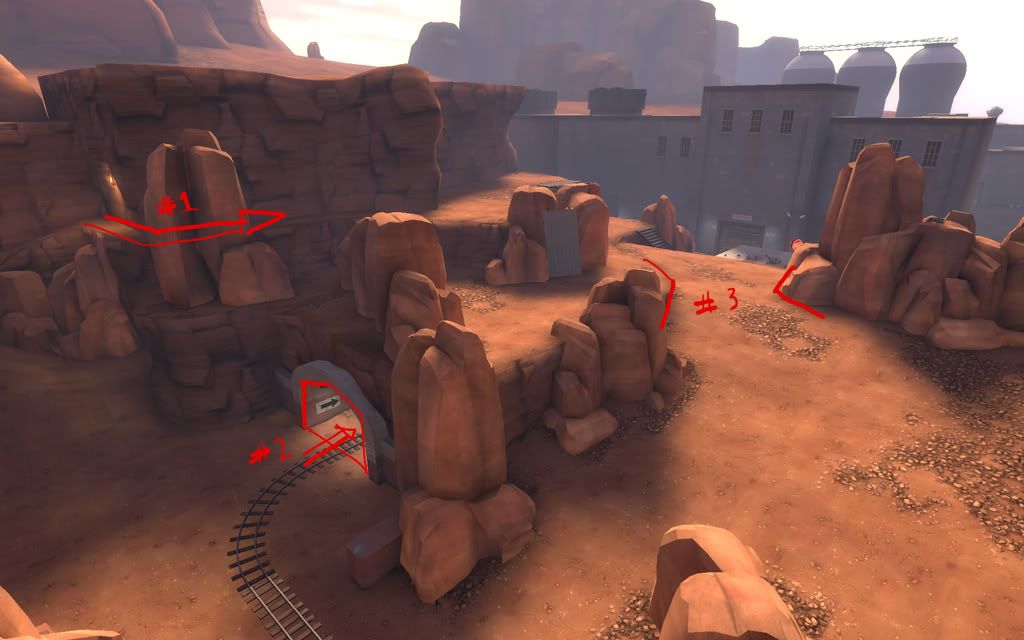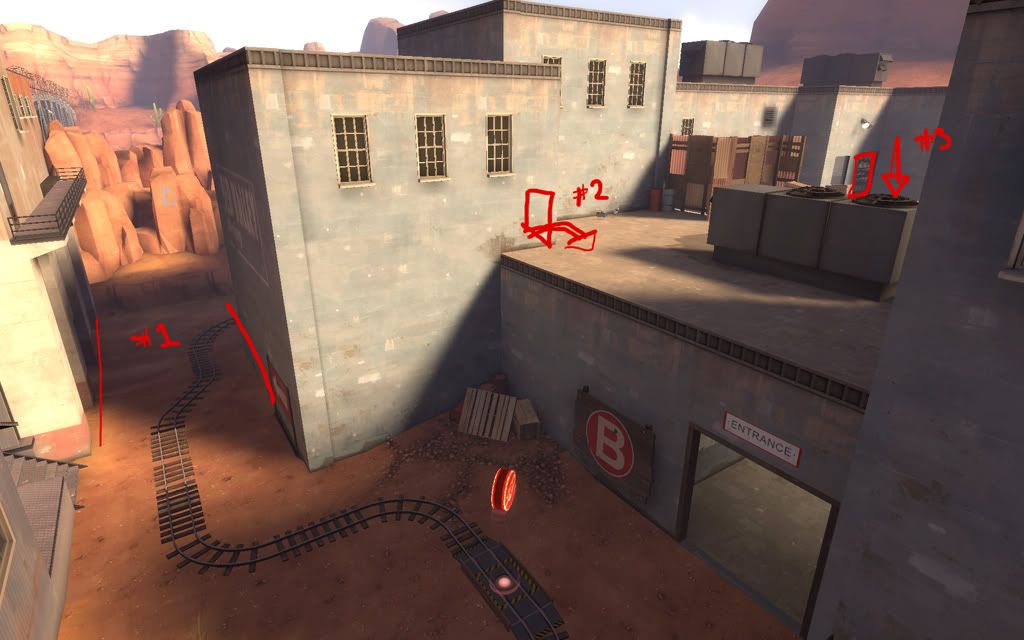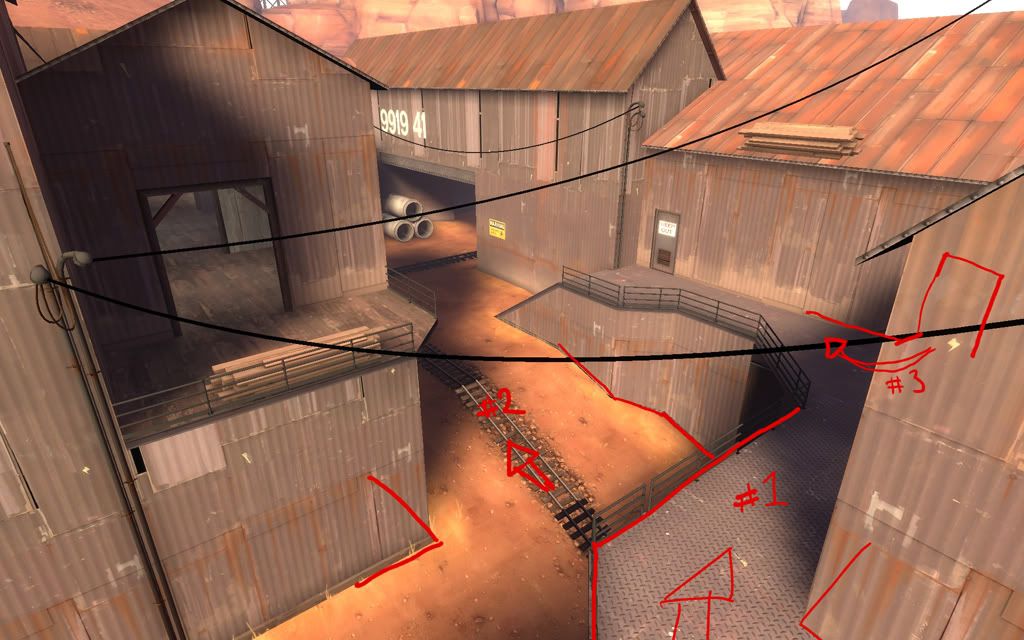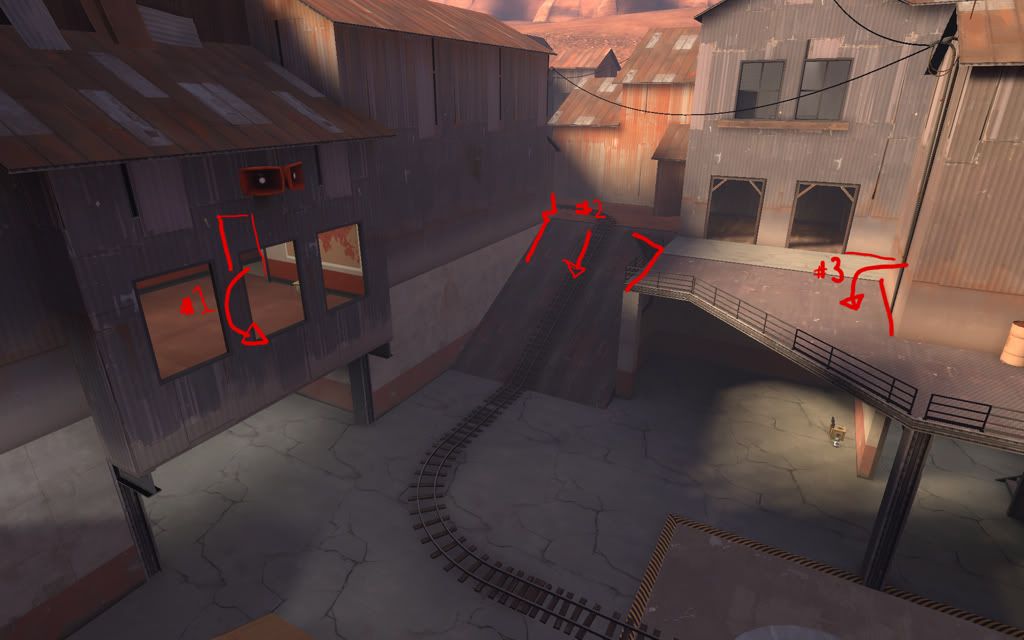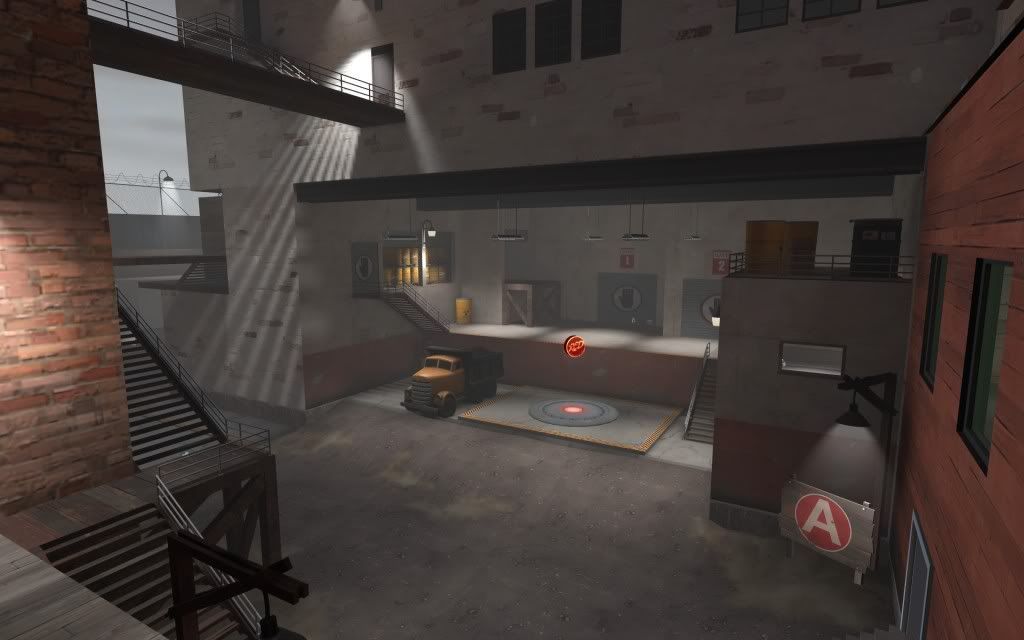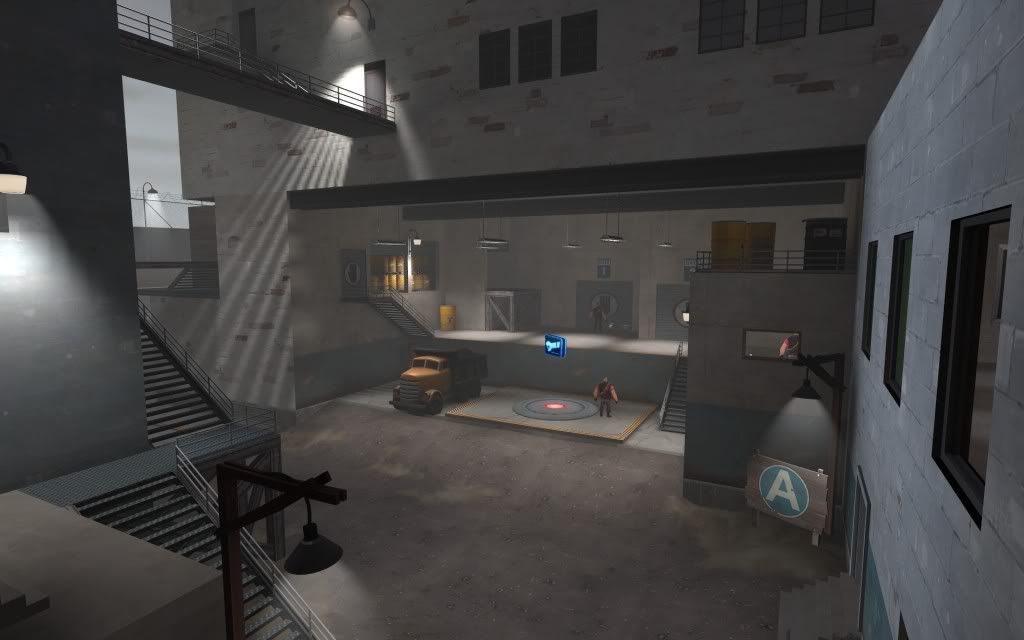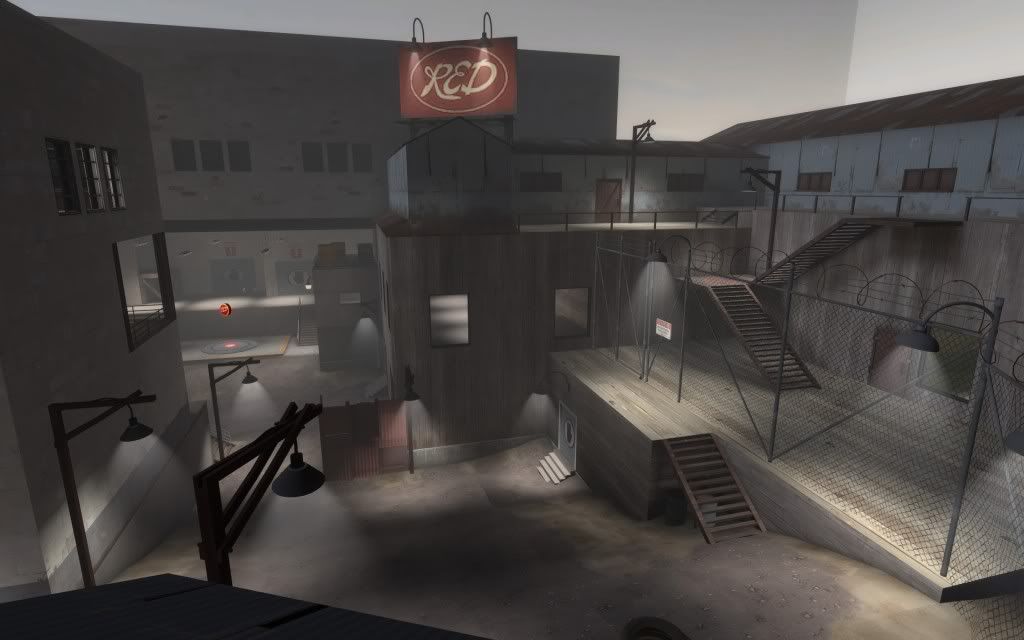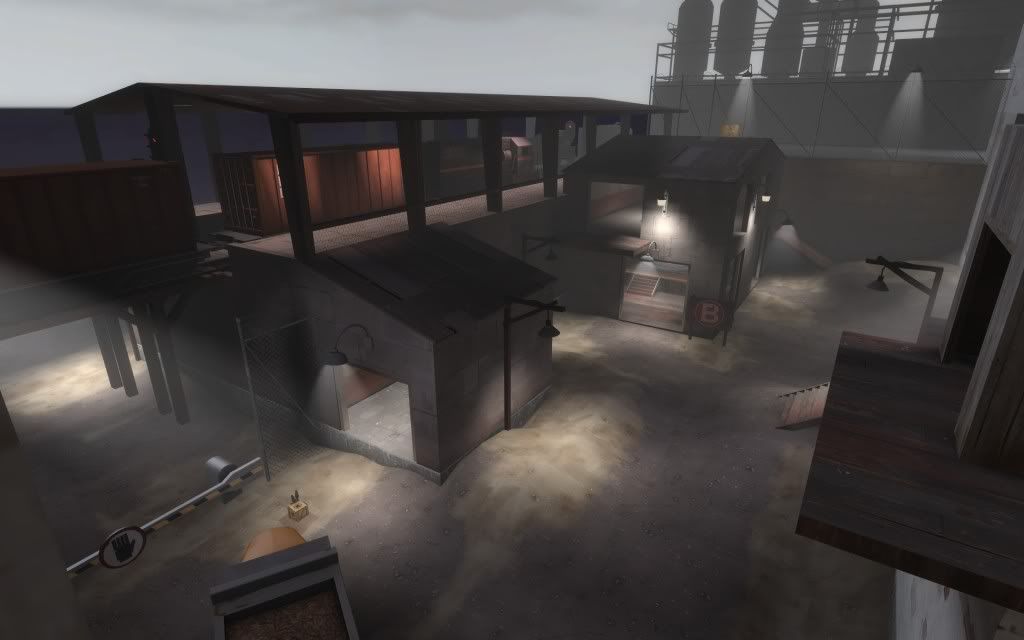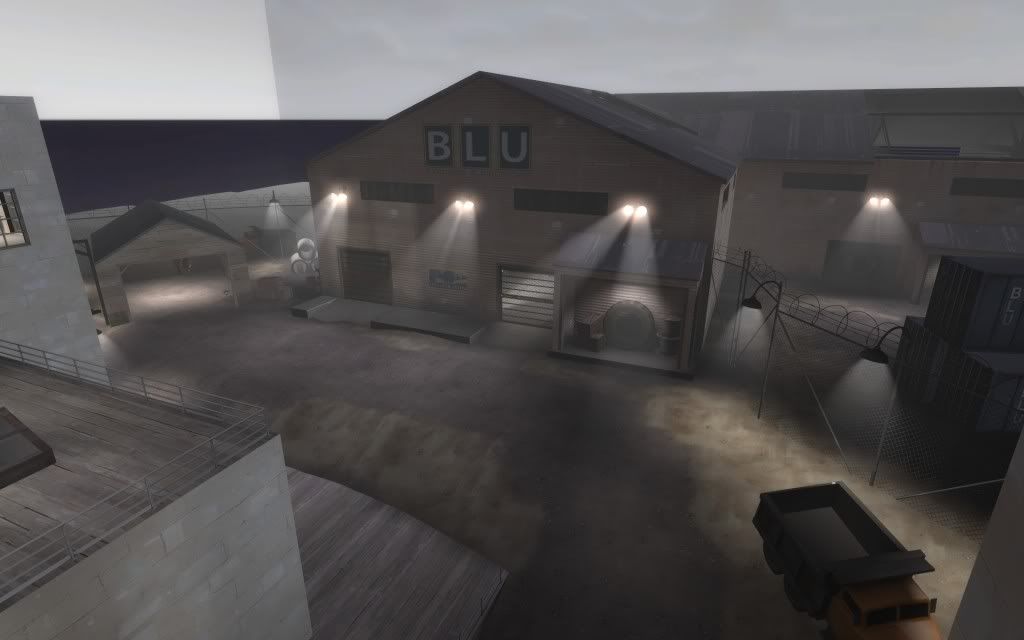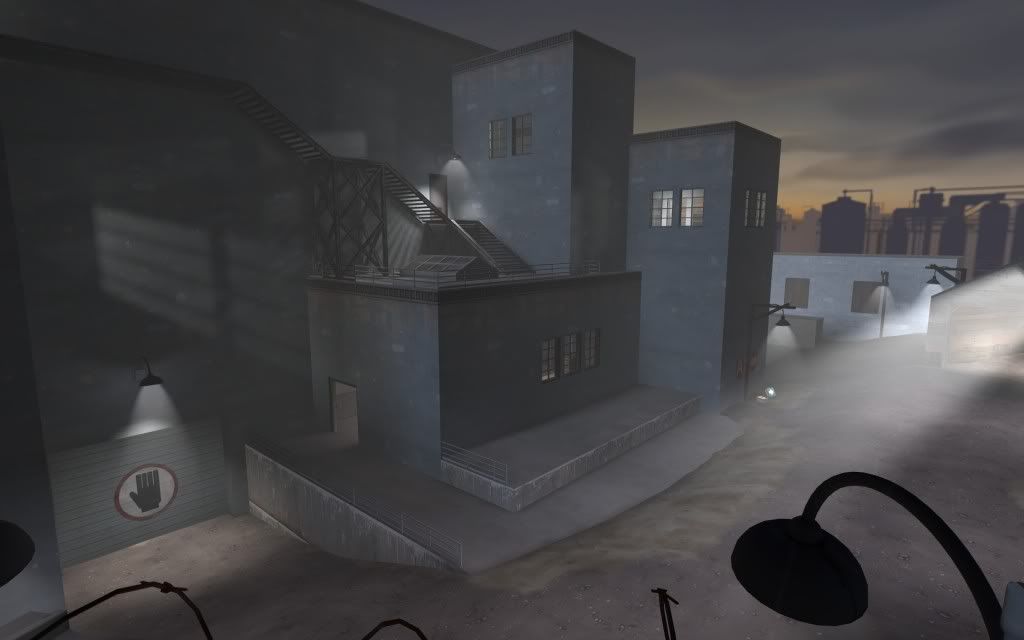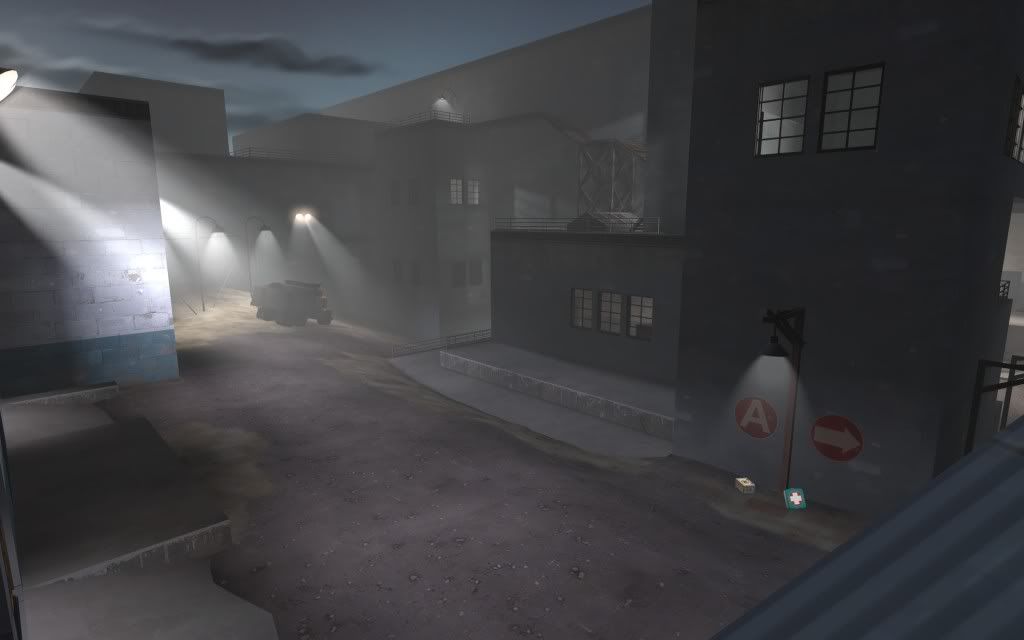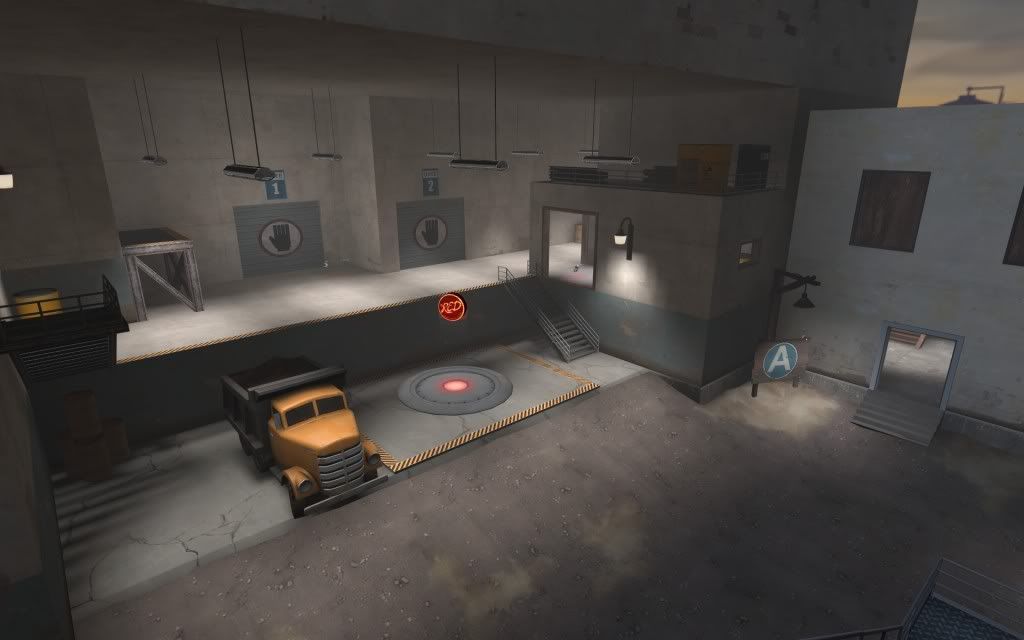The most interesting part of mapmaking has for me always been the early stages of prototyping. It's where you get to start seeing the world that only used to exist inside your head and it's also where you get to make the big rough changes to everything that didn't work, because quite frankly, doing designs only in your head doesn't work for an entire map.
Unfortunately I've yet to find a work flow that I'm quite happy with and I've tried several approaches.
Failiure
#1: starting out doing a two-layered design in photoshop did, not unexpectedly result in a map that was extremely flat with only one upper level, much like ctf_2fort but without the underground tunnels.
Failiure
#2: making sketches of the art style and theme of the map first and then trying to build good gameplay around it. Starting out with a big valley on one side with a river at the bottom, I managed to make a fairly good first point of a CP map but when I wanted the players to run across bridges to the second point I ran into huge optimization issues. While it's possible to pull off, I would recommend putting the scenic things in the 3D skybox and leave it there.
Failiure
#3: jumping straight into Hammer and trying to use big world brushes as a sort of Lego prototype. This seems to be the best of the three, creating a fairly interesting map. Unfortunately it also looked a lot like mix-and-match of selected parts of Dustbowl and Goldrush and was on the whole rather uninspired.
A major benefit of working with large brushes is that you'll virtually never end up with the thin wall problem where you want to make one area bigger or place a big prop where you can't because there is another area on the other side of the wall.
After so many failiures it would be a shame if I didn't learn anything. My latest version of prototyping works is taking a more basic approach, trying to start out with gameplay and the reason of why an area looks in one way instead of another.
Having the motivation for doing an action as the primary concern is a concept I've come across before, mostly while trying to learn poker or Starcraft 2. Doing something bad with a clear and distinct reason for it is often better than doing something good just because you felt like it. A formal and defined thought process is one of the first things you try to get when playing poker and it should hold true in design as well. Instead of "this house is boring, add a door and some windows" it should be "this area should be a low ground area that is the fastest attack route but suffers from weapons with splash damage and has bad sniper cover".
I've mentioned layers before and that is mainly because I think the two-dimensional sketching is still the fastest and easiest way to work on parts of your map, while I wouldn't recommend making the entire layout only in Photoshop.
Layer #1: the gameplay layer.
Having a layer dedicated to taking notes and trying to define your areas is my newest addition to the prototyping phase. Though still mostly untested and unrefined, I think it will be a solid part of my design phase.
What it boils down to is making a lot of notes, trying to define the purpose of an area and then adding on the other layers. Instead of just drawing a doorway on your flat surface, start out with writing a description "choke point with high ground on both sides" and then the reason for it "easy to defend on both sides, fast to push through with ubercharge". Once you've done that, the gameplay of an area has been defined without constricting the brushwork or graphic style.
Since this concept is so abstract it will also help out as an analytical tool, helping you to figure out why some parts of your favourite maps play so well and what sub-parts certain areas break down into.
Layer #2: the brush layer.
After the reasoning for an area is complete (and sometimes before that), it is time to start with the early heavy brushwork (grid size 32/64 Hammer units for "sketching"). If you're making a room, only make the walls that the room itself requires, no roof, windows or other details that make it one single type of structure in your mind, only the actual walls you need for your design.
After your design layer is complete you will also be able to work on several different versions of the same area. As long as it does what is defined in the design, changing a doorway is fine. In early alpha testing you should also try to focus as much as possible on doing changes to the brushwork first and only when and if you notice the design itself being unbalanced should you go back and change it. Since fast iterations rely heavily on fast responses and playtime from your testers, it might be an issue at non-professional levels where custom maps are played rarely if at all. Fortunately, testing small areas one at a time instead of testing the map as a whole should allow for faster iterations.
Making sure to stick within the design while changing architecture also puts more focus on the analytical skills, making sure that you're able to put bad parts into definitions of why it's bad.
Layer #3: the detail layer.
After the brushwork is done, you can put your attention to making the world look good but detailing generally has no place in a prototype thought process. In fact, one of my problems is that I put time into detailing too early, which I will hopefully be able to avoid by focusing more on the design layer. Jumping back between the design and brushwork layers is likely to happen but I think you should stay away from going back to the design layer once you've started on the details and lighting of a map. In essence, the higher layers constrict the lower ones. If you spend hours on detailing, you're less likely to make a needed change on a lower level.
My current five capture point map is my first attempt at using this process with the design layer but I have a good feeling about it, nothing that makes use of a more clearly defined reasoning can be all bad.
Click for full post
 Click for full post
Click for full post
